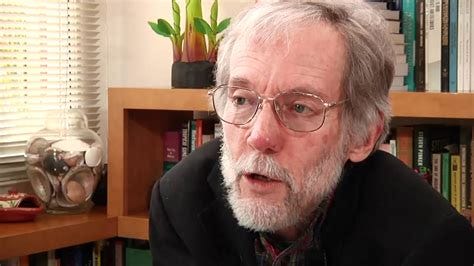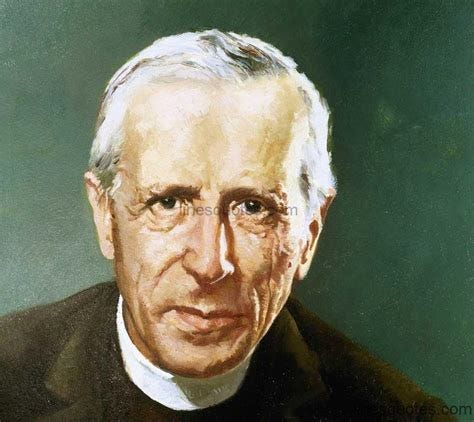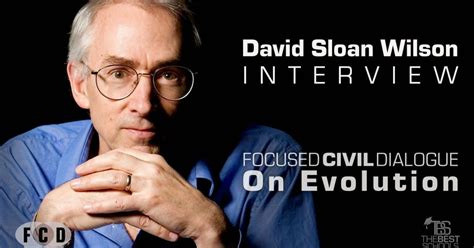On July 24, I read an intriguing Substack post by my friend, David Ronfeldt, about a course he was taking on the noosphere. I was intrigued because I knew that David and his co author John Arquilla had been working on those issues for years, most recently in a report they wrote for the RAND Corporation in 2020.
What surprised me—and changed my plans for the last month—was the fact that he was also attending a course on the topic put together by the world famous evolutionary biologist David Sloan Wilson for Human Energy, an organization I had never heard of before. Because I had liked two of Wilson’s books when I read them a couple of years ago, I checked out the course, only to discover that it was too late to join.
However, the 24 sessions in which Wilson talks about complex adaptive systems and evolution with scientists and other thought leaders were available to watch. Even though it would take me the equivalent of a full work week to watch them all, I decided to take the course as a 75 year old’s version of an independent study course which I did frequently back in the days before my hair color got challenged.
Not only was it nerd heaven, but Wilson’s discussions unblocked my writing since I had just gotten to the the point in writing Peace is a Verb in which Patricia Shafer and I plan to take our readers on a detour away from peacebuilding through complexity, evolution, and the like.
So, here’s what (I think) I learned.
The Noosphere
I’m one of the rare people who didn’t have to look up the noosphere, including how to pronounce it. The term was coined by the remarkable Pierre Teilhard de Chardin (1881-1955) who was both a scientist and a Jesuit priest whose work I first discovered while doing on my PhD research on the new left in France and one wing of its roots in Catholic thinking on what we would today call social justice. It also was central to the work I did in the Beyond War movement in the 1980s.
Teilhard thought of the noosphere as something like a global brain or consciousness that he saw beginning to emerge decades before anyone could envision the Internet or globalization or any of the other “facts of life” today that show just how interconnected we are. For our purposes here, it’s worth think of the noosphere in two overlapping but different ways:
An emerging empirical fact of life in the late twentieth and especially the twenty-first century
An aspirational goal for our thinking and cultural norms as we come to adjust to that reality that “we are one.”
In other words, the emergence of the noosphere amounts to the next stage in human evolution both in terms of the reality of life today and in terms of the new modes of thinking we will have to adopt in order to cope effectively with a world that is in constant change, is increasingly interdependent, and is facing unprecedented and global challenges.
The challenge lies in expanding our sphere of understanding to include whole systems which now includes the entire planet at a time when we are becoming aware that we are creating the noosphere which Teilhard could only sense but which we observe everyday because of what we’ve learned and done (for good and ill) in my adult lifetime which began shortly after he died.
Wilson’s Reality Tells Me What To Do
The Beyond War movement loosely threw around the idea that we were working on the next phase of human evolution but, this time, we would shape it ourselves. The idea had bounced around in my mind in the years since then and kept coming back to the very Teilhardian topic we used as the focus of a weekend retreat for the national leadership in 1987—reality tells me what to do—which is the title of the chapter that I’m still working on.
While watching it delayed (and complicated) writing the chapter, it was well worth the time, because seven of the key themes Wilson and his colleagues discussed speak directly to our book and to the future of peacebuilding and other social change movements.
Social Evolution. Just like species, societies evolve. And there is a pattern to social evolution that mirrors what one finds in the natural world. That starts with the existence of variation and mutation, followed by selection of the institution or norm or practice that (best) fits the current and changing and environment, which is then replicated enough so that the innovative trait goes to scale.
Given the realities of interdependence, complexity, and the like, this is the context in which we should best locate our work. The “reality” of life is qualitatively different from that of the 1940s when I was born and our social movements and public policies should take that new environment as their starting point. Business as usual—including by the peace movement—can only take us so far.
Major evolutionary transitions. Time and time again, Wilson and his interviewees used those three words and their relationship to the noosphere in framing their discussion. If everyone from Teilhard de Chardin to Greta Thunberg are right, we are in the midst of one now. Put in the context of my own work, it’s not just about peacebuilding in Burundi or Baltimore. We are in the midst of a system-wide crisis that requires the kind of paradigm shift I’ve been ranting about when I first read Thomas Kuhn’s The Structure of Scientific Revolutions as a college sophomore in 1966.
Major evolutionary transitions do reflect the accumulations of many small changes. However, Wilson’s interviewees all concluded that they can be sped up and, to some extent, designed because humans are conscious in ways that have no real parallel in other species whose evolution was governed by “natural forces.”
Complex adaptive systems that adapt as systems. When we met in 1987, scientists were just beginning to think in terms of complexity which did not enter our discussion which was limited to understanding and changing fairly simple interconnected systems. Wilson and his colleagues got me thinking about the ways that systems as a whole can adapt which also led me to the remaining key themes. It isn’t just a single individual organism’s fitness in dealing with a changing environment; sometimes entire systems adapt as well.
I would have loved to have seen more attention to how this happens in social systems. That said, Wilson’s conversations with John Arquilla (whom I’ve met) and David Bollier on making cooperation and the norms supporting it as the next adaptive step we have to take is worth watching, especially since Arquilla has spent his entire career teaching at the Naval Postgraduate School. As I knew going in and Wilson picked up as the interview progressed, there are plenty of people in the defense establishment who see the need for system level change every bit as much as we peaceniks do.
Initial conditions and trickle up. Although this wasn’t central to all of the discussions, a number of Wilson’s guests lent support to something we’ve learned in global peacebuilding. More often than not, major, lasting changes starts “at the bottom” through what we call local peacebuilding.
In this broader context, Wilson’s interviewees talked about how big changes typically start on the periphery of a system and then, in John Arquilla’s terms, “trickle up” until the entire system changes.
Ostrom’s design principles and intentional evolution. By the middle of the series, Wilson started systematically asking his guests about Elinor Ostrom’s design principles for sustaining a commons. They are complicated and important enough that I’ll deal with the separately in a separate blog post next week.
Here it is enough to note that Ostrom won the Nobel prize in economics (despite being a political scientist, I hasten to add) because of her work on how successful commons govern themselves. I’ll leave the details for next time, but what’s key here is that most of Wilson’s interviewees agree with these key points in her work:
The world increasingly has to be treated as a commons whose fate affects us all
We actually know a lot about how to govern and manage a commons—whether that be a patch of land in a (New) England town or the entire planetary ecosystem.
That includes knowing how to design a commons and deal with individuals and organizations that violate its laws and agreed upon norms
That’s a good thing because we now have to change the ways we think and act by putting the good of the commons at or near our list of priorities
That, in turn, has to build on our ability to cooperate which is as hard wired into our psyches and societies as is our desire to compete with each other
It isn’t rocket science. It was wonderful watching all of these interviews with high end scientists. Just as valuable were those with men and women who are very much anchored in the real world. Particularly useful here was his interview with Tyson Yunkaporta and Megan Kelleher which revolved around his book, Sand Talk, and their notion that indigenous culture can save the world.
To see why, consider the famous Power of Ten video made by design pioneers Charles and Ray Eames in the 1970s. They are, of course, much better known for the furniture and other physical objects they designed. Nonetheless, this video suggests just how important it can be to shift the mental lens we use to make sense of the world. Note, too, that it was narrated by Philip Morrison who helped designed the triggering device for the first atomic bombs and later became a physics professor at MIT where I briefly met him. Note, too, that this video helps viewers of all ages learn about the noosphere and exponentials which I know from first hand experience having showed it to my grandson while he was in fourth grade and getting fascinated by exponential rates of growth (he’s now a precocious seventh grader).
There are plenty of examples. Last but by no means least, there are lots of examples of the emerging noosphere. Two episodes deal with thought provoking examples in their entirety—smart cities and Wikipedia. Wilson drops a number of others into the flow of the interviews—the Mondragon network of cooperatives, the Hylo software platform, the Catholic and Teilhardian notion of subsidiarity, new ideas transforming management science, and his own work in the Binghamton NY area where he lives.
But the most interesting and unsettling of them came in an extended discussion he had with Kevin Kelly, founder of Wired and author of What Technology Wants. For reasons they did not get into, Kelly has long been fascinated by the Amish and their unusual relationship with technology, which was surprising given the fact that he is one of the leading lights in the modern IT world. What grabbed Kelly, though, was the question they asked when they had to deal with new technologies—not all of which they reject out of hand, despite what you might think given all of our stereotypes about the Amish community.
They ask themselves what the impact of adopting a new technology would be on the entire community. They will adopt a new technology if they are convinced that it would help the larger Amish ecosystem. Kelly (and I) would presumably find more times and places where new technologies would be of benefit than the Amish do.
Still, what would the world look like as more and more of us ask, “how will my actions affect everything and everyone else.”
Although Wilson never gets very far into spirituality, isn’t this the same as noticing that the version of the Golden Rule that can be found in every major global religious tradition itself is a pretty good guide to living in the noosphere?
Thanks David Sloan Wilson
I can’t thank David Sloan Wilson, the larger Human Energy initiative, and the Kycera Foundation that funded the project enough.
After all those hours in front of my screen, I feel like I live in David’s home office from which he did all but three of the interviews to the point that I have a pretty good sense of everything from his taste in clothes to the fact that books don’t seem to come off of his bookshelf (and realized that the same is true of mine) to the fact that his desk is neater than mine to his irreverent sense of humor.
It is hardly surprising that I’ve never met him given the fact that I haven’t taken a biology class since high school. However, my next step is to reach out to him and let him know that he is already an Alliance for Peacebuilding member even though I doubt that he’s ever heard of us. But, because his university’s Institute for Genocide and Mass Prevention Policy is a member, he is, too.
The views and opinions expressed in this article are those of the author and do not necessarily reflect the official policy or position of the Alliance for Peacebuilding or its members.






What a lovely overview of the Science of the Noosphere masterclass. Yep, it's terrific (I'm doing it at the moment; someone else there mentioned that you had written this post, so I wandered over to have a look). Good luck with your important work. Keep connecting those dots!